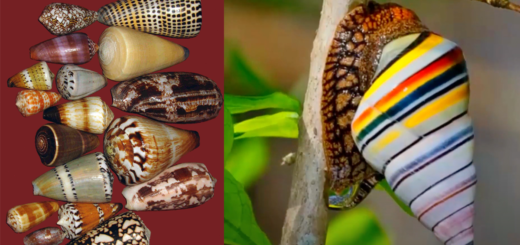Facts About Strange Forms of Currency used During a Pandemic

Today, digital currency stands to eliminate paper money one day, possibly. As people can now transfer money electronically on their smartphones, governments are moving to eliminate cash.
Today, business professors say that using digital currency could help eliminate the spread of viruses like Covid-19.
Whatever the eventual fate of paper money, it’s interesting to look at alternative forms of currency throughout history. So, we’ll look at two strange currencies from medieval times.
One of these forms of money lost popularity after a pandemic, the Black Plague. The other currency may have helped stop the spread of the same widespread pandemic.
Finally, we’ll look at one odd paper money with a fascinating story. (But not plague-related for a happy change!)
Eels as Currency
In medieval England, one common form of currency was eels. Recently, a Ph.D. student in Medieval Studies from Cornell University, Dr. John Wyatt Greenlee, explained how the eels were used.
So may great questions! I’ll try to get to them in coming days. But, briefly:
There were LOTS of eels in medieval England. People ate them, traded them, wrote about them, & paid taxes in them. In 1200 there were 500k+ eels being paid in in-kind taxation each year. Here’s a map! pic.twitter.com/tHlHqDCDKZ
— Surprised Eel Historian, PhD (@greenleejw) December 12, 2019
Eels were so popular in England that they appeared on medieval shields and crests and were a favorite food for nobles and King Henry I.
Notably, Shakespeare talked about eels more than any other fish.
I wrote yesterday about how not knowing how to deal with eels was a trope in pre-modern England — a culturally visible stupidity. This shows up in lots of places…including Shakespeare’s King Lear!
Fun fact: there are more eels in Shakespeare’s writing than any other fish! /1 pic.twitter.com/6WDoUYP1qT
— Surprised Eel Historian, PhD (@greenleejw) August 26, 2020
Paying Rent in Eels
Greenlee shared a map showing where people paid taxes in eels. In 1200, people paid as many as 500 thousand eels. Landlords received payments from their tenants in “sticks” of 25 eels. On the other hand, the English called a bundle of ten eels a “bind.”
According to TIME:
“Many landlords collecting rent payments in eels were monasteries; being paid in eels meant the monks would have enough fish to eat during the Lenten season when they couldn’t eat meat. The fish was thought to be the perfect food to eat to suppress sexual thoughts during this fasting season.”
Dr. Greenlee, now an eel historian, says that an Amazon Prime subscription would cost between 150 and 300 eels today. However, European eels are critically endangered. Thus, Greenlee is trying to show people why endangered animals like eels are worth saving today.
Eels After the Black Death
In 1348 and ’49, the Black Death outbreak led to a rapid 90% decline in rent payments made in eels annually during the 13th century and the 14th century. Unfortunately, the human population declined rapidly. At the same time, other forms of protein became available, and it seems eels were no longer as essential.
Next, we’ll look at another animal form of currency that seems to have protected a country to some extent from a plague.
Related Post: The Most Amazing Facts About Fish – Everything You Should Know
Payments in Squirrel Pelts and Parts?
As we’ve seen, eels were an extremely popular currency in England until the Black Death. Meanwhile, in medieval Russia, one popular form of money was squirrel pelts. The pelts were a form of currency. Also, people used parts like ears, claws, and snouts. Today, we speculate those parts were to make change.
Related Post: 22+ Fun And Nutty Facts About Squirrels: Acorns, Habitat And More

Pennsylvania Bank executive David Doty collects odd forms of currency from around the globe. In a CNBC interview, Doty speculated about a possible benefit of trading in squirrels during the Black Plague.
By reducing the number of squirrels, it stands to reason it also could have reduced the exposure to infected fleas.
“During the Black Plague, Russia didn’t get hit as hard as everybody else. By making their currency the squirrel pelt, it may have reduced the number of disease-bearing parasites,” Doty explained.
However, today Russia is cracking down on hunting another rodent, the marmot. Officials suspect the hunters on the border with Mongolia and China could be spreading bubonic plague carried by the animals.
Red Squirrel Currency
In medieval Europe, red squirrel pelts were a form of currency and appeared in currency exchange charts until 1926.
In Finland, the word for money, Raha, translated to ‘dried fur,’ comes from squirrels. If you had ten pelts, it was called a Tikkuri, while 40 pelts were called a Kiihetelys. With 100 pelts, you could buy yourself a cow.
Seeing how we can now trade in digital currency, could it be going the way of the squirrel soon? That’s the topic of this video from VoxCreative below:
Cook Islands Bill Featuring Ina Riding a Shark
Now for something totally unrelated but fascinating. One of the weirdest paper currencies may be a bill from the Cook Islands in the South Pacific.
On the note, which can be 3 or 20 dollars, a naked woman rides a shark into the sunset. As she rides, she holds a coconut, which she has opened by cracking it on the shark’s head, per the legend.
The woman is Ina, a representative of the “first woman.”
Per the island myth, she’s the loved one of the Eastern Polynesian God of the Ocean named Tinirau. The sea God lived on a floating island called the Sacred Isle Motu-Tpau.
On a journey to visit Tinirau, Ina travels by shark, aided by Tekea the Great, the king of all sharks, per the Cook Island News.
Ancient DNA Tied to Ina
Interestingly, an American man from Montana, Darrell Crawford, was found to have the oldest North American DNA ever tested last year. Astonishingly, his mitochondrial DNA was traced back 17,000 years to an ancient female ancestor: Ina, one of four ancient ancestors, including Ai, Chie, and Sachi.
The four women were among the earliest colonizers of North and South America. The ancient women’s mitochondrial DNA was passed through generations until today as discussed in the Seven Daughters of Eve by Oxford genetics researcher Bryan Sykes.


As another odd footnote: The Cook Islan $3 bill featured Ina is by artist Rick Welland who died in 2016. Little did he know, his artwork and the bill became one of the country’s most sought-after souvenirs after it was adopted in 1992. Before he died, he was surprised to learn the bills were going for $300 on eBay.
Footnote: Last year, the island’s government reportedly provided $450,000 in the budget to reprint more of these bills.
Featured Image: Squirrel via Pixabay and Eels via Pixabay







